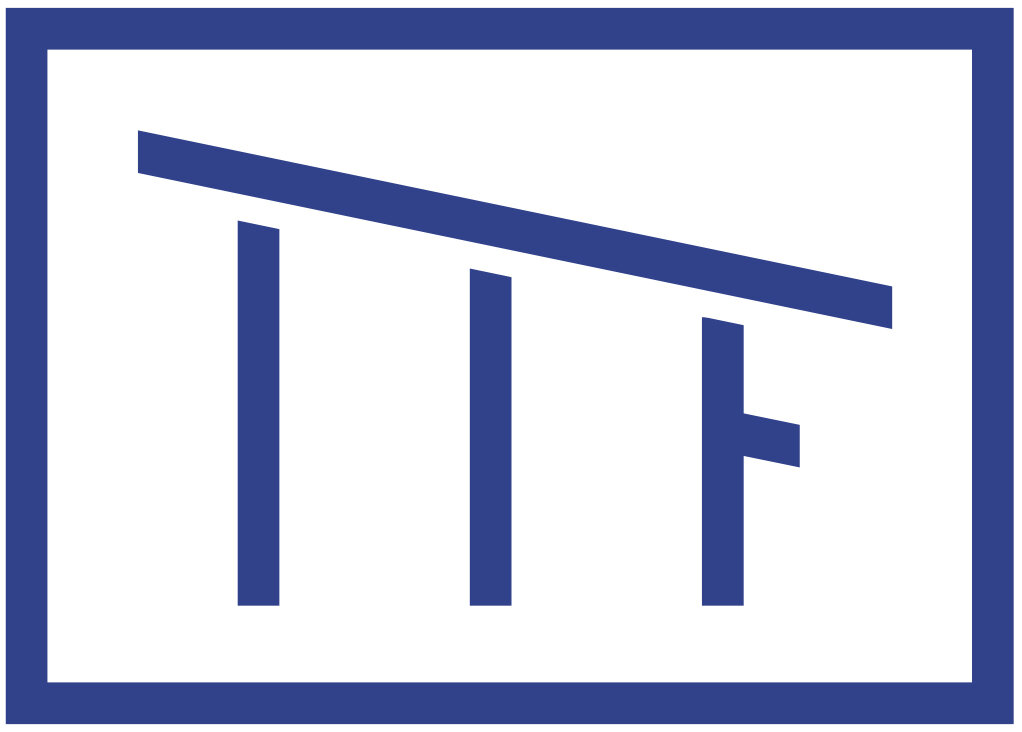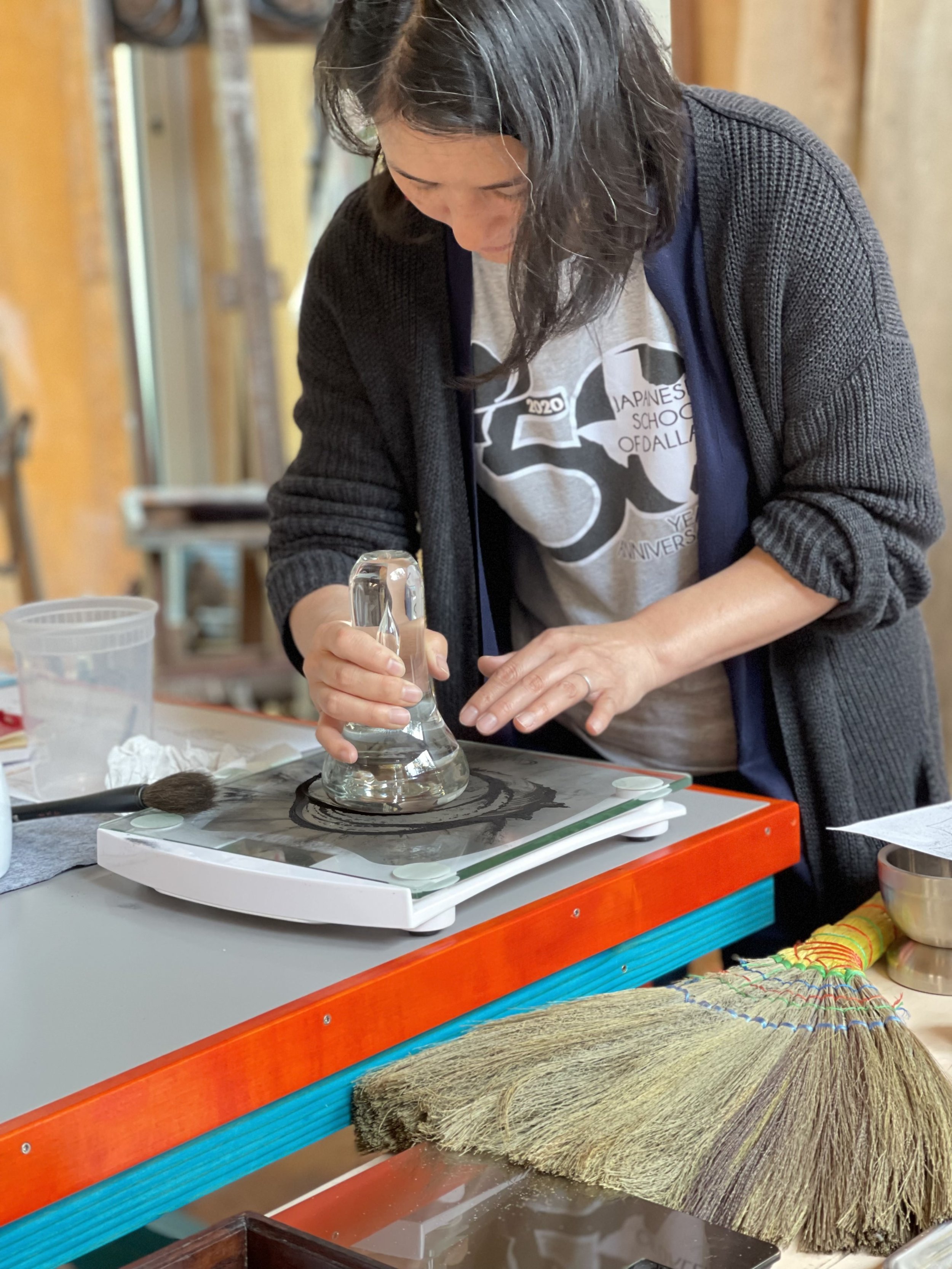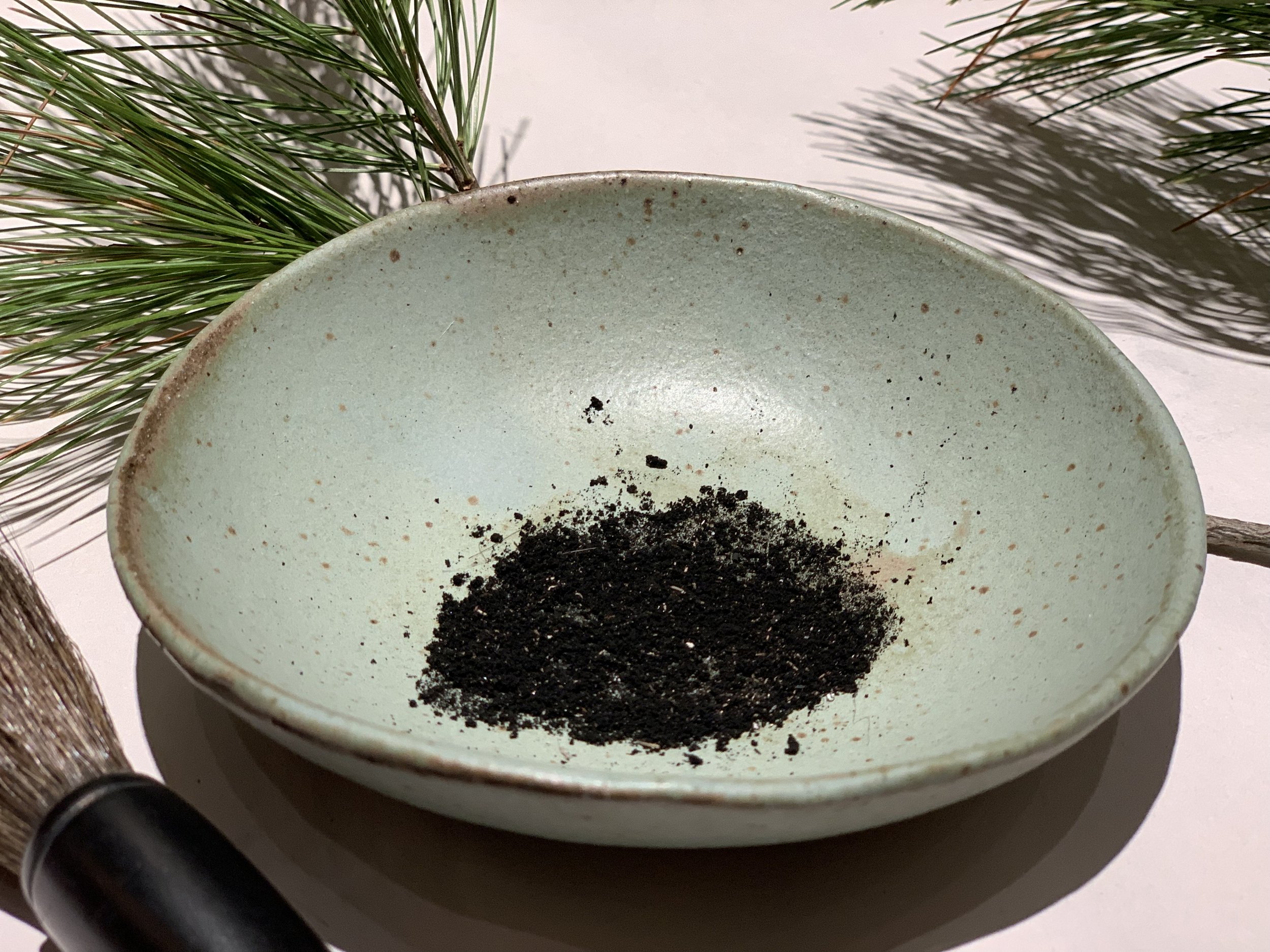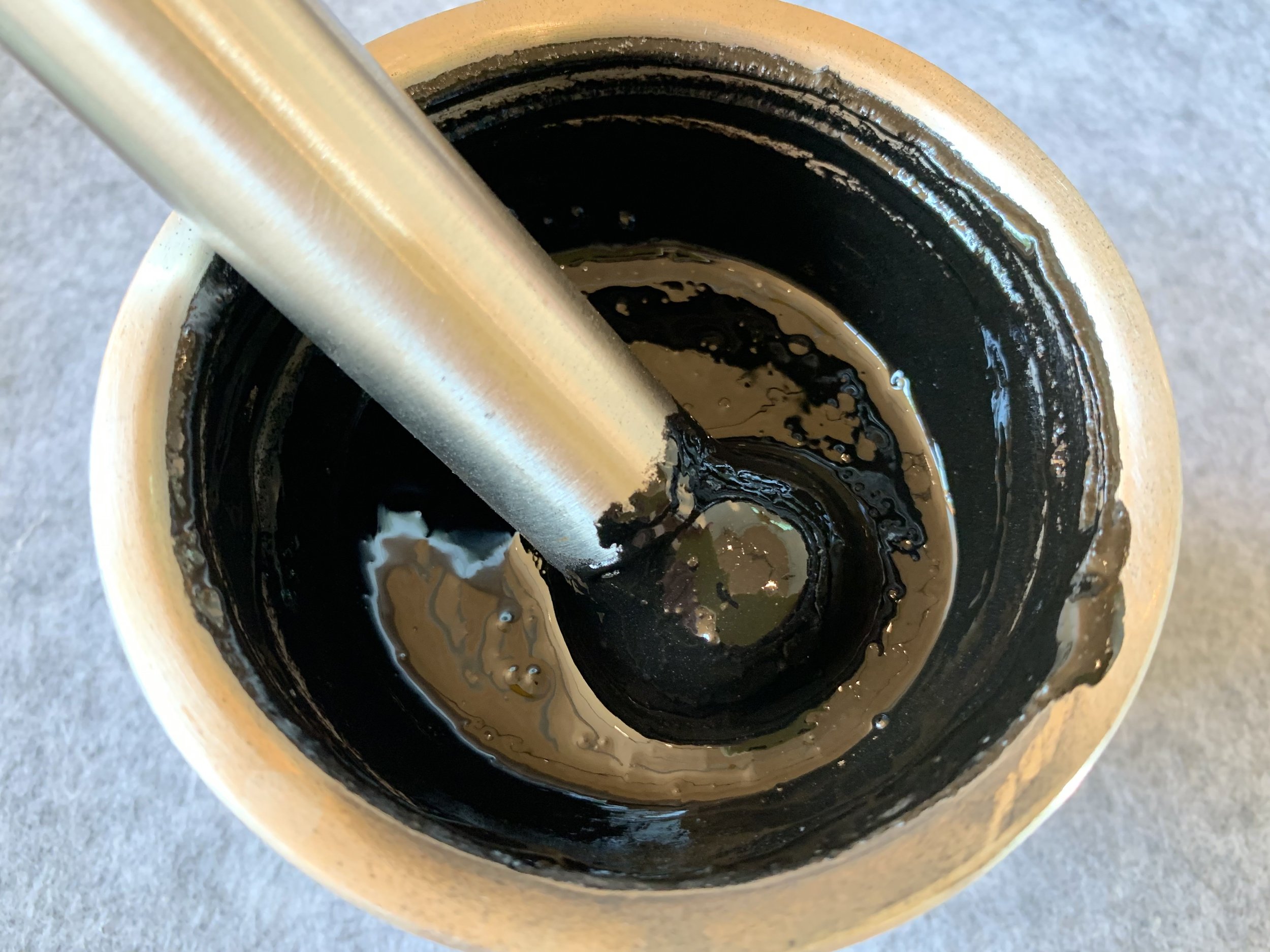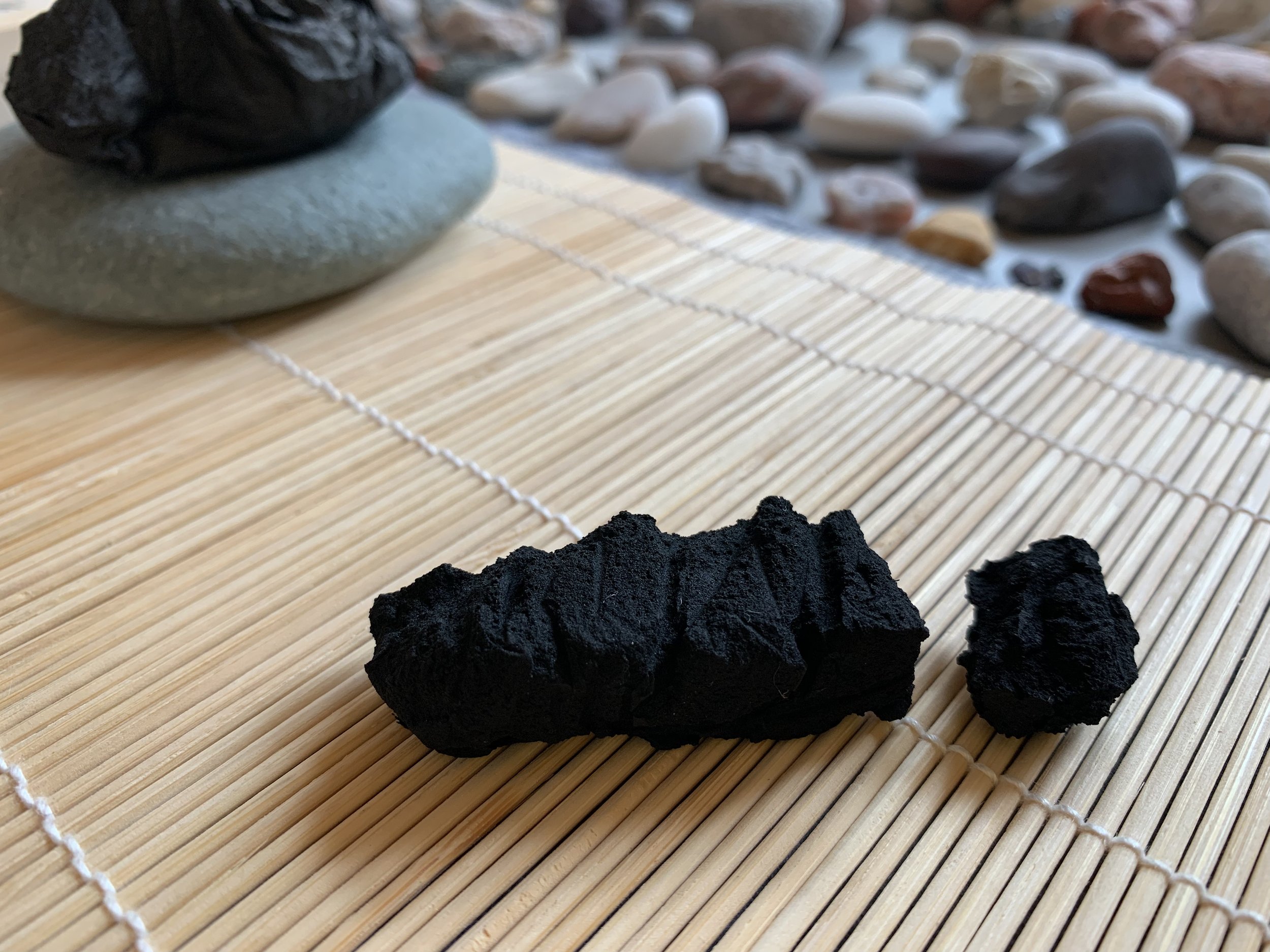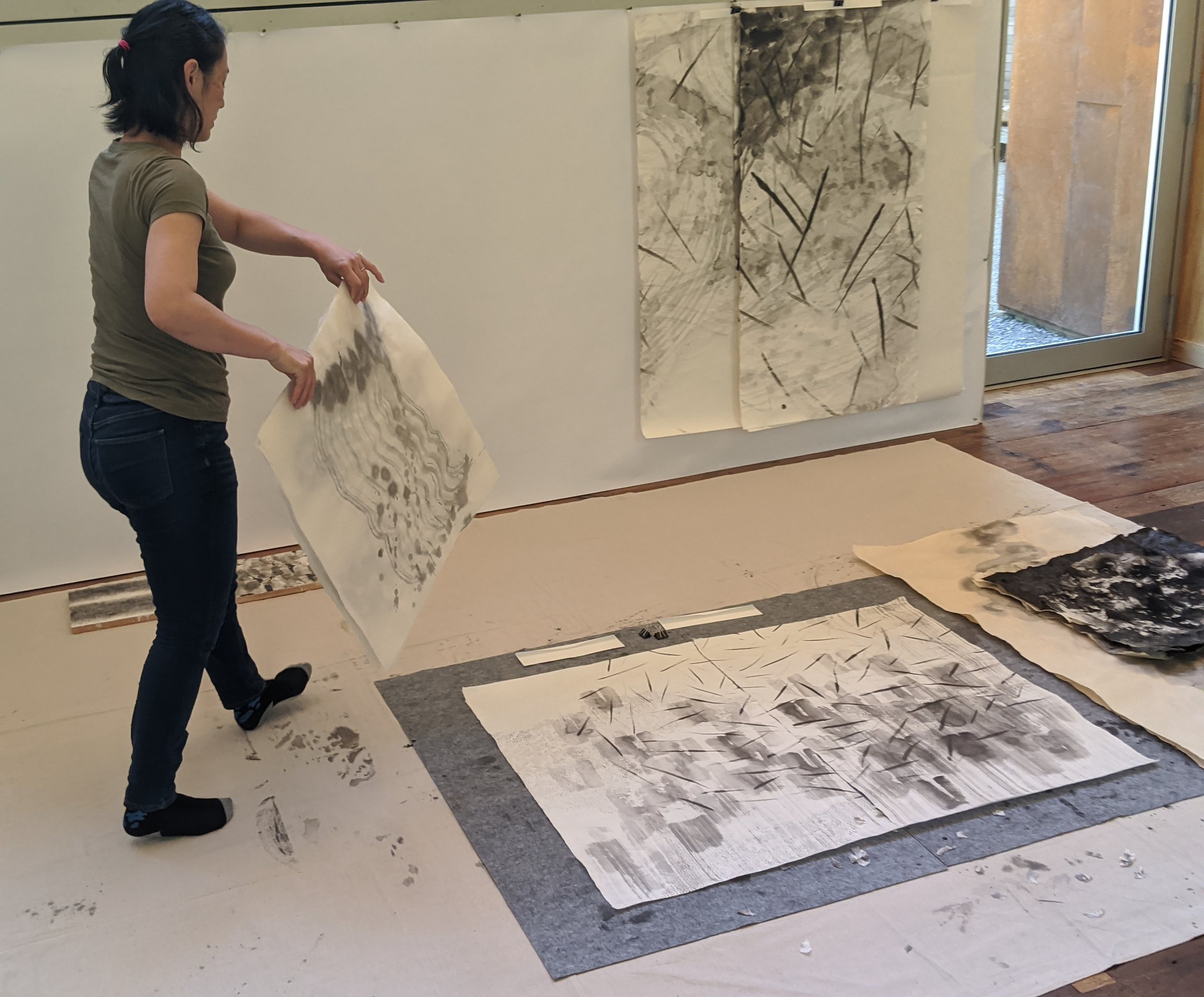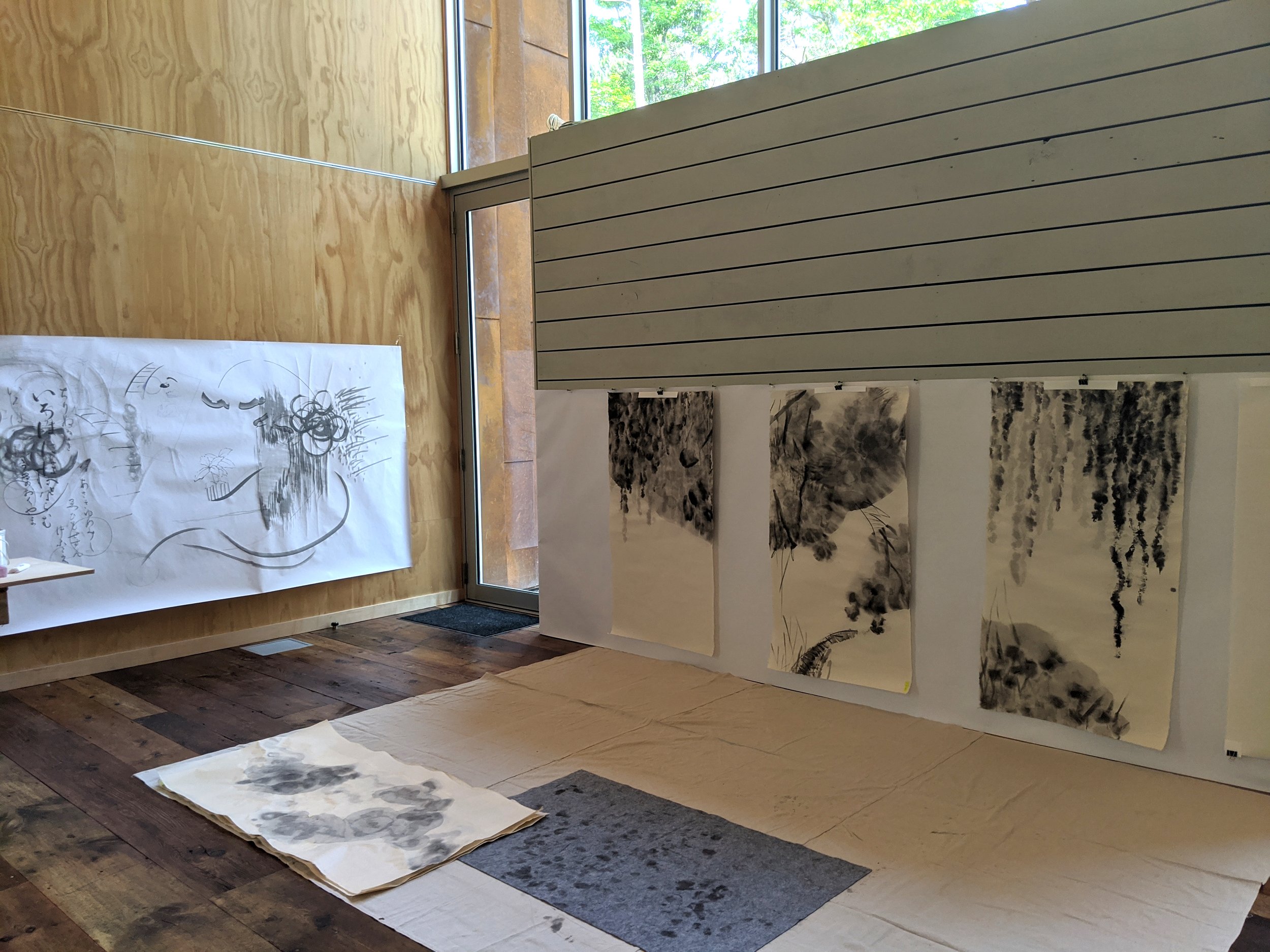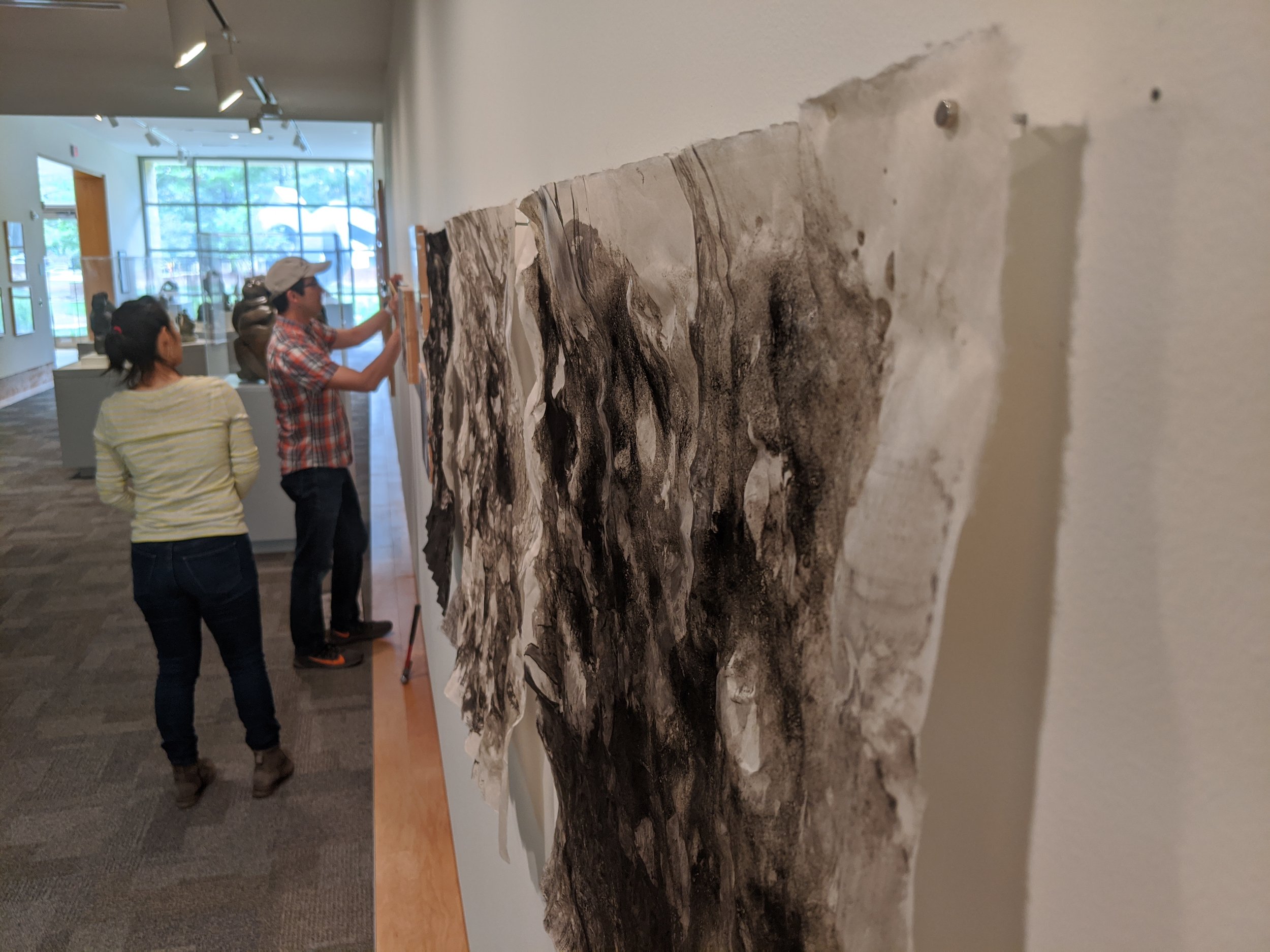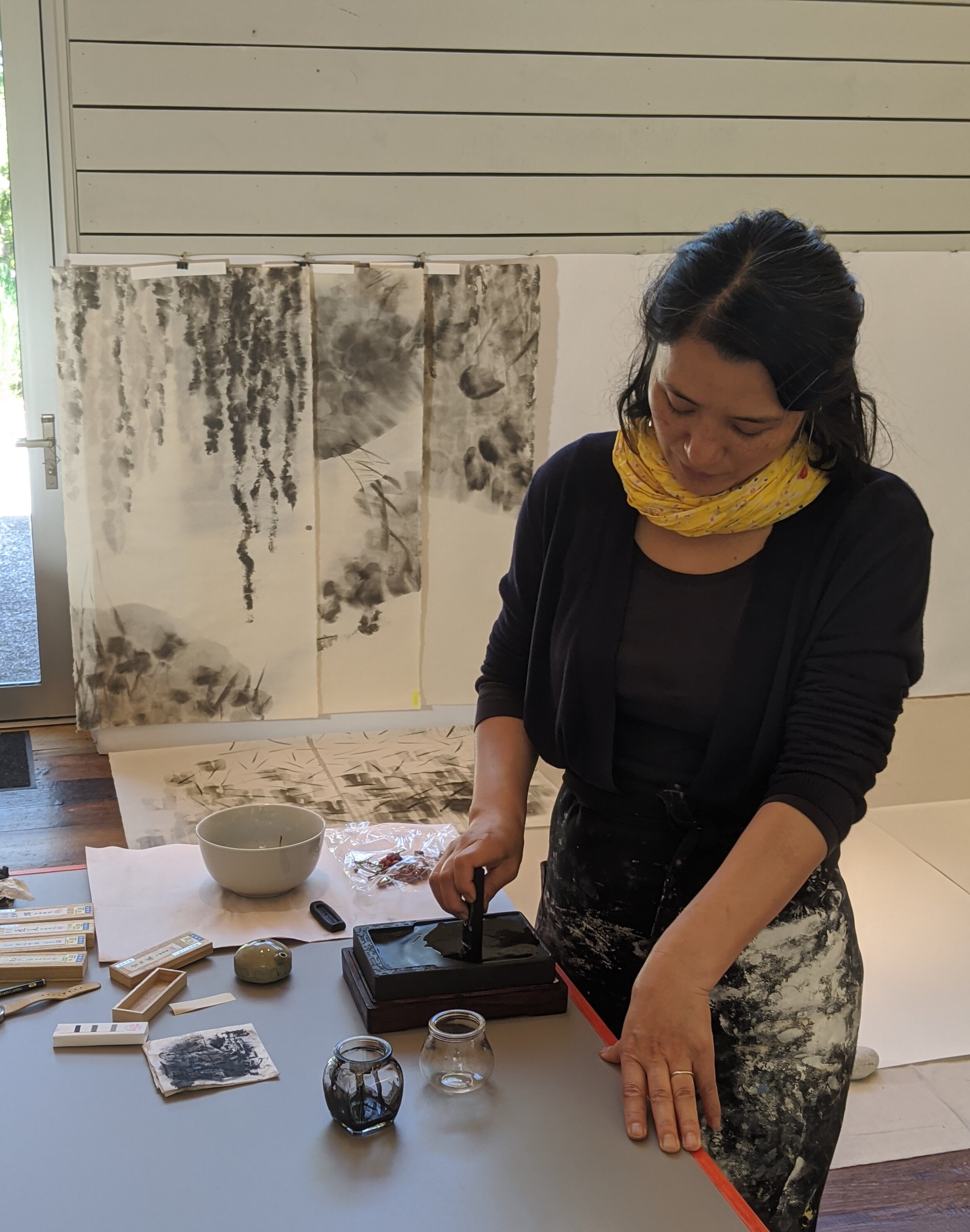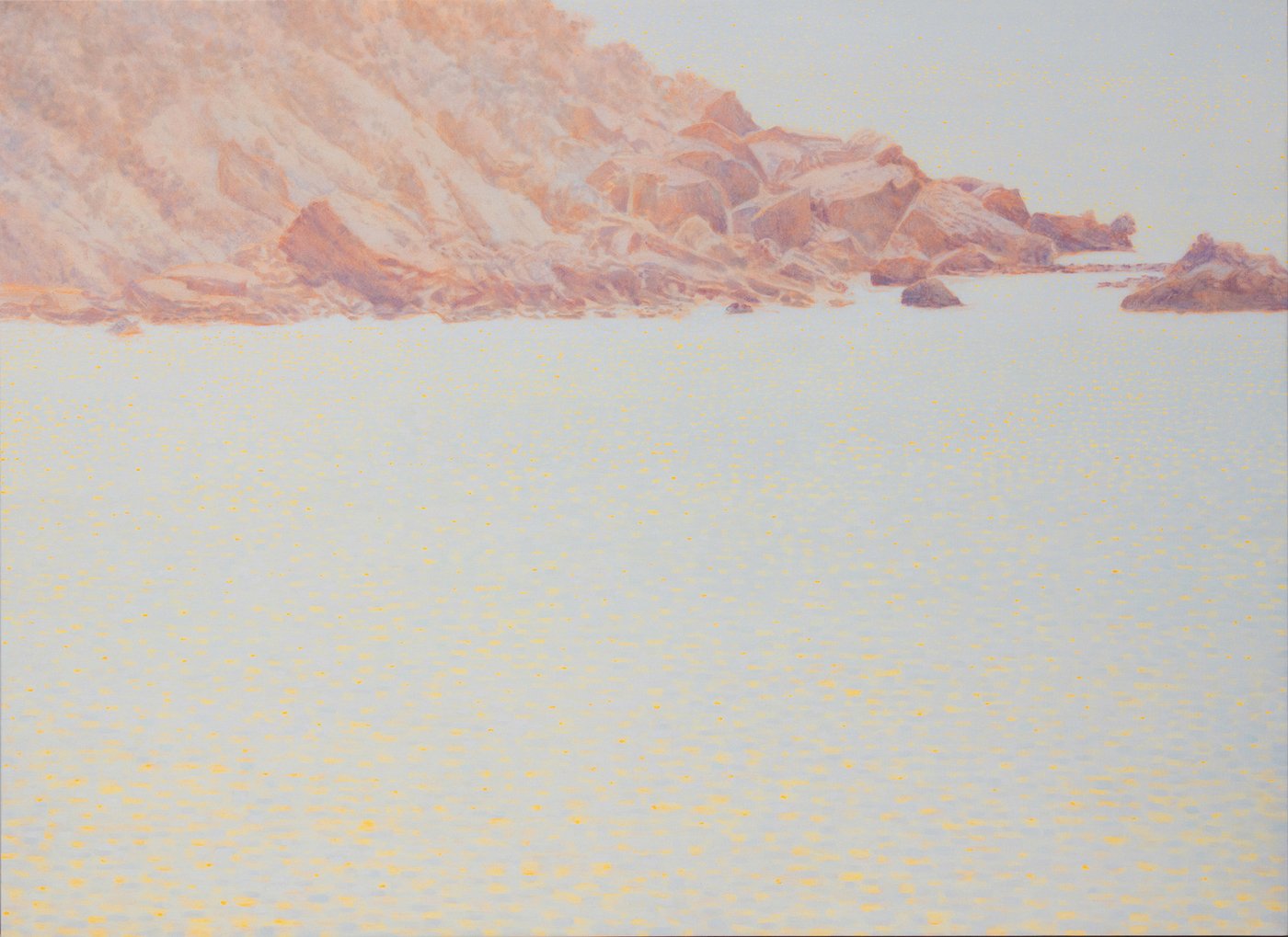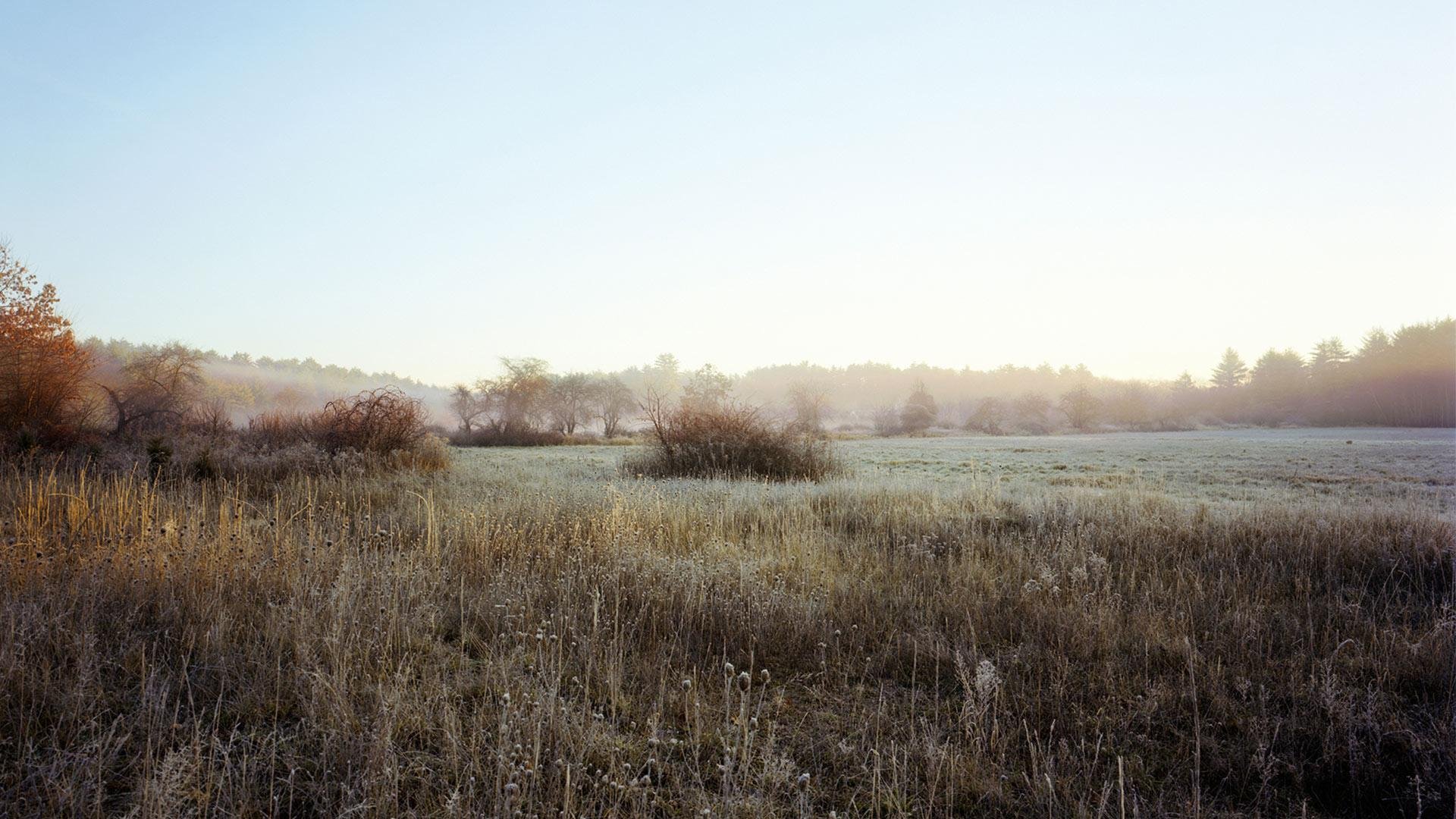Nishiki Sugawara-Beda
Nishiki Sugawara-Beda is a Japanese-American visual artist based in painting and installation, and she holds an MFA from Indiana University and a BA from Portland State University. She has exhibited her work in solo and group exhibitions nationally and internationally to promote cultural diversity and exchange. Exhibition venues include: Spartanburg Art Museum (SC), Morris Graves Museum of Art (CA), and Amos Eno Gallery (NY). Publications include: New American Paintings, Expose Art Magazine, AEQAI, and London Post. Awards include: Seed Grant, Diversity Fellow Program, International Enhancement Grant, Idaho Art Fellow, and Sam Taylor Fellowship. She is an Assistant Professor of Painting and Drawing at Southern Methodist University in Dallas, TX.
KuroKuroShiro Kami CI, Sumi on wood, 53"×13.75", 2020
Artist Statement
I was born and raised in Japan, where all schoolchildren learn calligraphy. Calligraphy has become an entrance point to understanding my own culture as it allows me to recognize the existence of underlying meanings in all forms—language, images, even the mundane interactions of being. This craft provides the foundation and inspiration for my practice.
My aim is to connect with the power of mark-making—a spiritually engaged mark-making. Consciously cultivating a mindless state of mind where marks are made on the surface is vital. The marks, which create forms, areas, patterns, layers, and seemingly tangible objects, can hold the essence of ideas, cultures, values, morals, and visceral emotions. The mark can be simple, yet holds everything. The essential is the focus, and it is most accessible in abstract forms because it enables us to connect both with the essential and with each other.
My installation work, by contrast, transforms the viewer into participant. In the traditional format of Japanese calligraphy, seals (which to Western eyes resemble stamps) serve as signifiers depending on their placement on the paper. The words or phrases—the literal characters on each seal—provide one meaning; the placement provides yet another. I have decoded and reinterpreted this reading by forming single lines of seals and have fashioned them into Mobius strips which are then suspended in space. Because the characters that comprise the seals are being presented without their calligraphic context, I am providing a blank canvas of sorts that serves as an invitation to the viewer to complete the work. The viewer brings their own emotional state, adds their own words and phrases both physically and metaphorically, and becomes the missing element—a human, corporeal calligraphic form themselves.
At Tusen Takk
While in residence, Nishiki immersed herself in the Northern Michigan landscape, exploring the natural world and experimenting in Sumi, the traditional East Asian ink she often works in. In her series, KuroKuroShiro (“black-black-white” in Japanese), she seeks to capture and interpret the essence of the land. Nishiki’s abstract landscape paintings converge the physical and the spiritual: while soot composes the base of her ink, her works are reflective and contemplative by way of the works’ contrasting tones and evocative forms.
While in residence, Nishiki experimented in several processes for producing and working with Sumi. The first process involved harvesting creosote (a carbon material produced by the burning of plants) from Tusen Takk’s chimney. Nishiki finely ground the creosote with a glass muller and bound the powder together with animal glue, kneading the mixture to fully coat each particle and produce a stick of Sumi. The second process involved burning local red pine and collecting the soot, a laborious and time-intensive process, collecting only 1 gram of soot (the size of a soybean!) in 4 hours.
She also experimented in a technique inspired by takuhon (ink rubbing), the ancient Japanese art of printmaking whereby engraved calligraphy is transcribed onto paper. Nishiki imprinted Tusen Takk’s rock garden onto paper by coating the paper in rabbit skin glue to conform to the rocks’ shape, dusting the wet glue with Sumi powder, and dry brushing the surface.
Work created at Tusen Takk was on view in the following exhibitions:
Artist Spotlight: Nishiki Sugawara-Beda, Dennos Museum Center, Traverse City, MI, 2021
Somewhere Around There, Amos Eno Gallery, Brooklyn, NY, 2022
Pot of Soot at the End of the Rainbow, Cris Worley Fine Arts, Dallas, TX, 2022
A studio visit at Tusen Takk with Craig Hadley, Executive Director and Chief Curator at the Dennos Museum Center in Traverse City, MI.
Public Program
Related News
